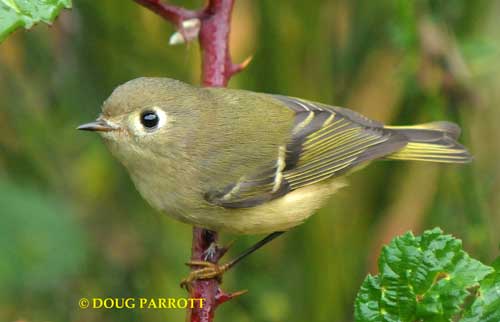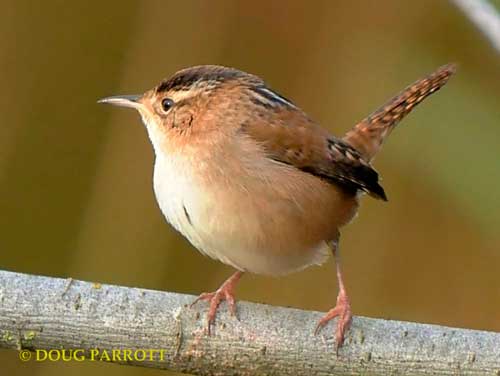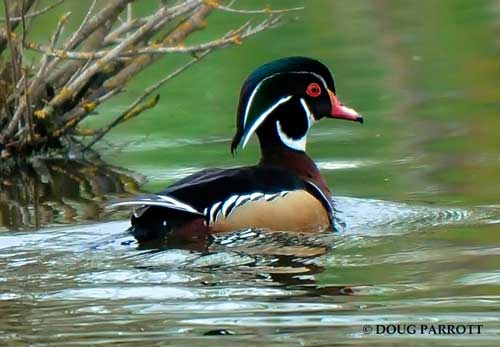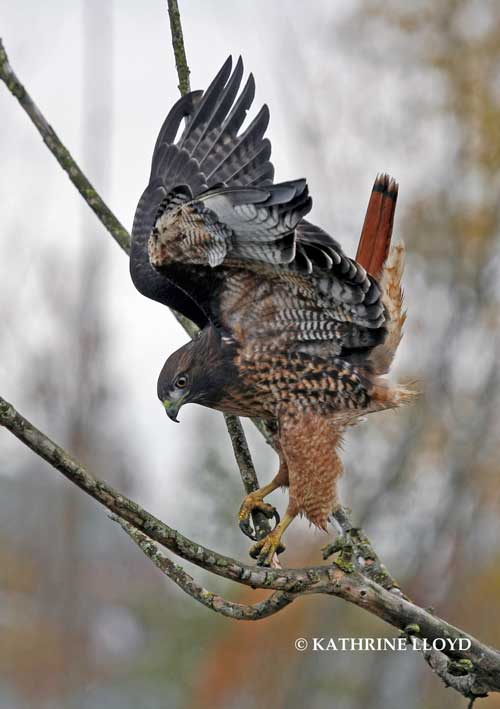Recently, I’ve added a new project to my activities at Montlake Fill. The Friends of Yesler Swamp (the swamp is easternmost part of the Fill) have asked me to post a “Bird of the Week” on the signboard at the entrance to the main trail leading into the swamp. Actually, I think I’ll be posting a “Bird of every two weeks,” because I’ve counted only about 105 different species in the swamp, and I’d like this project to last longer than just two years!
The current Bird of the Week is:
RUBY-CROWNED KINGLET
Two Ruby-crowned Kinglets were going after each other on the East Trail of Yesler Swamp the other day. The way these diminutive knights fight is they shine their ruby crowns at each other. Whichever warrior shines the brightest wins the match. The male I saw was shining his crown so brightly it looked like his head was on fire. I’ve never seen more red feathers on a kinglet’s crown in my life. Normally, kinglets keep their firebrands sheathed, as it were. So seeing even a glimmer is unusual for me in the field. As for the kinglet’s opponent, he had already retreated into the brush, flinging insults with his little voice as he fled.
Meanwhile, to the victor go the spoils. The winner shook out his feathers and began feeding in the territory he had defended. Ruby-crowned Kinglets spend the winter with us here in the balmy south of their range. When they arrive in late fall, they must establish a new territory each year. The stakes are high: rich habitat means survival through the difficult winter and early spring. Luckily for “our” kinglets, Yesler Swamp and the rest of UBNA provide plenty of food for all.

Fun Facts about Ruby-crowned Kinglets:
• Look carefully at Ruby-crowned Kinglets’ feet: they’re yellow!
• Ruby-crowned Kinglets breed in the heights, either in the Far North or in montane regions from New Mexico north to Alaska. They come down to the lowlands in winter.
• Ruby-crowned Kinglets eat small insects, arachnids, their eggs, and small fruit and seeds. They glean their food with their, tiny, pointed bills.
• Kinglets’ food is often stuck to the undersides of leaves and branches. To get at it, kinglets often hover under a likely piece of vegetation, flapping their wings quickly and maneuvering with their tails to stay in one place (a bit like hummingbirds).
• Males and females are loyal to each other throughout the breeding season, but in the winter they part company. Spring finds each one looking for a new mate.
• Relative to their size, Ruby-crowned Kinglets lay more eggs than almost any other bird — as many as 12 in one clutch.
• Both parents work hard to bring food to the babies after they hatch, but only for a couple of weeks. After that, the female leaves, and the male continues to care for the young.
• The nests are somewhat elastic and can expand as the young birds grow.
• Ruby-crowned Kinglets have only one near cousin: Golden-crowned Kinglets, which can also be found in Yesler Swamp. Golden-crowned Kinglets have black-and-white racing stripes on their heads, as well as gold-colored crowns that are always visible.
• Ruby-crowned Kinglets often feed in mixed flocks, traveling from one bush to another in the company of chickadees, other kinglets, wintering warblers, and other small birds.
• They are fierce birds. When they see a predator, such as a Northern Saw-whet Owl, they will band together and mob the owl, pestering it until it leaves. Listen for excited, fast-paced chipping noises from many throats — it’s a good way to see an owl!





